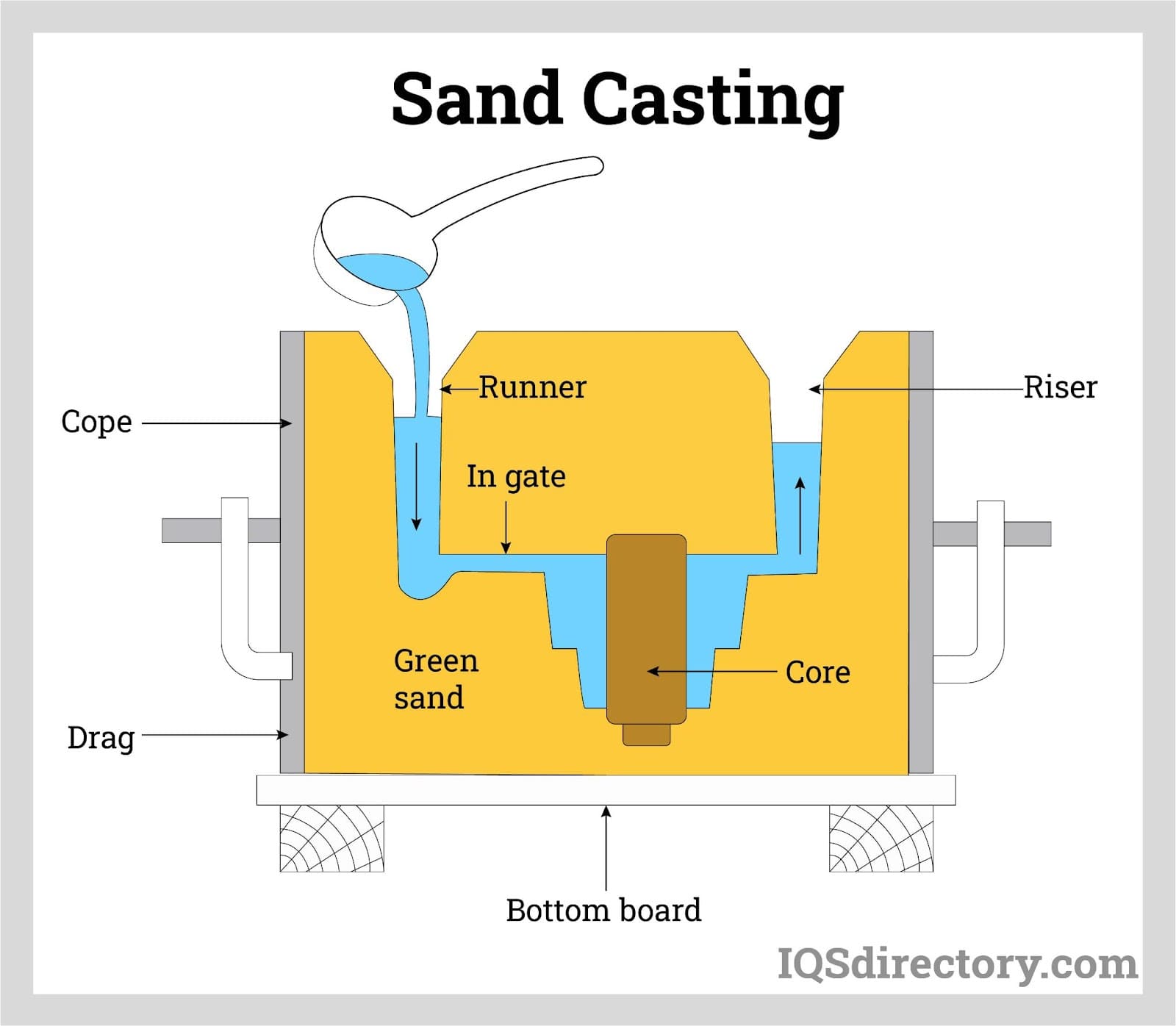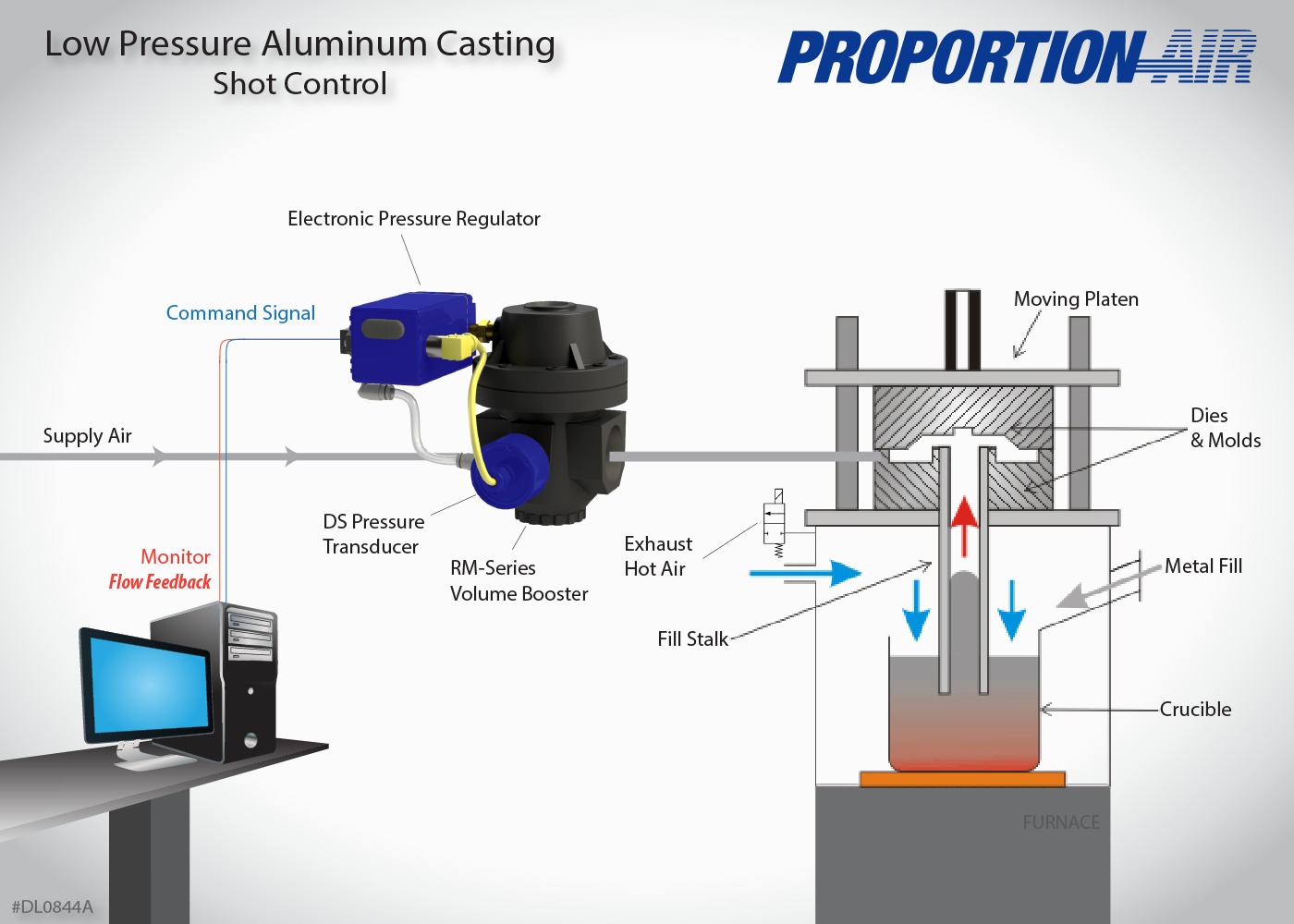Why Aluminum Foundry Wisconsin remains to be important in casting
Wiki Article
Exactly How Aluminum Foundry Adds To Innovations in Aerospace Design
Aluminum factories are important to innovations in aerospace design. They generate light-weight, high-strength elements that are necessary for modern airplane. Via advanced casting methods, these foundries create complicated geometries that improve architectural honesty. Additionally, the advancement of exceptional Aluminum alloys supports the industry's concentrate on fuel performance and sustainability. Difficulties stay in the manufacturing procedure. Recognizing these variables discloses the extensive influence of Aluminum on aeronautics's future.The Significance of Lightweight Materials in Aerospace Layout
As the aerospace industry proceeds to develop, the value of lightweight materials becomes progressively apparent. The demand for effectiveness and sustainability drives designers to prioritize using products that minimize overall weight without jeopardizing structural honesty. Light-weight materials, particularly Aluminum, play an important function in enhancing fuel performance, boosting payload capacity, and raising the overall performance of airplane.The combination of these materials permits for cutting-edge layouts, allowing producers to create even more aerodynamic forms that can withstand extreme conditions. The reduction in weight not just reduces functional expenses however additionally adds to a lowered environmental footprint, lining up with worldwide initiatives towards sustainability in air travel.
Advanced Spreading Techniques in Aluminum Foundries
Advanced spreading strategies in Aluminum shops play an important function in aerospace design by allowing the production of exact and lightweight elements. Advancements in mold style and precision spreading procedures are crucial in accomplishing perfect performance and structural honesty. Furthermore, the development of lightweight alloys improves the general performance and performance of aerospace applications.Cutting-edge Mold And Mildew Layout
Ingenious mold and mildew style plays an essential role in the performance and efficiency of Aluminum shops, particularly within the aerospace sector. By leveraging advanced products and strategies, modern mold and mildews can be engineered to endure high temperatures and stress, ensuring peak performance throughout the casting procedure. These layouts usually include complex geometries that enable the production of light-weight yet structurally audio elements, vital for aerospace applications. Additionally, making use of computer-aided design (CAD) software application helps with precise modeling, enabling foundries to refine and imitate mold designs prior to physical production begins. This not just boosts the high quality of actors components yet likewise lowers waste and lead times, bring about considerable expense savings. Overall, cutting-edge mold layout is a foundation of development in Aluminum Foundry innovation for aerospace engineering.Accuracy Casting Processes
The performance of cutting-edge mold and mildew styles perfectly integrates with precision spreading processes, which are important for generating top quality Aluminum elements in aerospace engineering. These procedures, consisting of sand casting, die casting, and financial investment spreading, ensure the creation of intricate geometries with tight tolerances. Advanced techniques like vacuum cleaner spreading and pressure pass away casting enhance the integrity and surface coating of the final products. Precision spreading reduces product waste while making the most of the mechanical buildings of Aluminum, essential for aerospace applications. Furthermore, utilizing real-time monitoring and progressed simulation tools during the casting procedure permits instant adjustments, bring about improved quality assurance. Jointly, these precision casting procedures placement Aluminum shops at the forefront of aerospace development, sustaining the industry's demand for dependability and performance.Light-weight Alloy Growth
As aerospace engineers seek to improve gas efficiency and performance, light-weight alloy growth ends up being an important emphasis in Aluminum shops. These shops employ advanced casting techniques to create alloys that supply exceptional strength-to-weight ratios. Innovations in alloy make-up, consisting of the consolidation of aspects like lithium and magnesium, allow the manufacturing of materials that hold up against severe conditions while minimizing total aircraft weight. Strategies such as die casting and investment casting assist in the precision manufacturing of intricate shapes, which are important for aerospace applications. In addition, continuous research aims to maximize these alloys for improved mechanical buildings and boosted toughness. By prioritizing light-weight alloy development, Aluminum factories significantly add to the advancement of aerospace engineering, leading the method for extra reliable and sustainable aircraft designs.
Enhancing Structural Integrity With Aluminum Parts
Aluminum components offer substantial benefits in boosting structural integrity within aerospace design. Their light-weight nature adds to total effectiveness while maintaining strength, which is necessary for aircraft performance. In addition, the stress and anxiety resistance residential properties of Aluminum help ensure the sturdiness and reliability of aerospace structures under various operational conditions.
Lightweight Material Advantages
While conventional materials commonly compromise weight for toughness, making use of Aluminum parts in aerospace engineering provides considerable advantages in architectural stability. Aluminum's light-weight nature contributes to general layout performance, allowing for even more structured aircraft that consume much less fuel, consequently boosting sustainability. The product's exceptional strength-to-weight proportion guarantees that components maintain resilience without adding unnecessary mass. This top quality cultivates improved efficiency and dexterity in flight, along with maximized haul capacities. Additionally, Aluminum's resistance to corrosion lengthens the life expectancy of aerospace structures, reducing upkeep prices and enhancing safety. As suppliers significantly embrace Aluminum alloys, the aerospace sector experiences a transformative shift in the direction of extra effective and effective design solutions that focus on both performance and environmental obligation.Tension Resistance Properties
Numerous materials possess special residential properties, Aluminum's exceptional tension resistance stands out as a vital element in enhancing the structural stability of aerospace elements. This resistance plays a crucial duty in making sure that airplane can endure numerous functional anxieties, including exhaustion, effect, and ecological problems. Aluminum alloys, specifically engineered for aerospace applications, display high tensile strength while keeping lightweight qualities, making it possible for designers to create a lot more efficient frameworks - Aluminum Foundry. Additionally, the capability of Aluminum to withstand cyclic loading without significant contortion adds to the long life and dependability of aerospace components. As innovations proceed in Aluminum Foundry methods, the advancement of stress-resistant Aluminum components promises more renovations in performance, safety, and performance across the aerospace industry, solidifying Aluminum's duty as a recommended material in contemporary designFuel Performance Improvements Driven by Aluminum Innovations
As the aerospace industry seeks to improve fuel effectiveness, innovative uses Aluminum have actually become an essential remedy. Aluminum's light-weight nature significantly lowers aircraft weight, enabling reduced gas intake during trip. This decrease in weight is vital, as even little decreases can bring about significant improvements in overall fuel economy.Advanced Aluminum alloys, created for boosted strength and toughness, enable producers to develop components that keep structural integrity while minimizing mass - Aluminum Foundry. Furthermore, the combination of Aluminum in airframes and engine elements assists in boosted the rules of aerodynamics, contributing to decreased drag and raised performance
The adoption of Aluminum in aerospace not just fulfills the need for fuel-efficient style however likewise aligns with regulative stress for reduced emissions. As these technologies proceed to advance, they play a substantial role in setting new benchmarks for gas effectiveness, ensuring that the aerospace market can satisfy growing economic and ecological difficulties.

The Function of Aluminum in Sustainable Aviation Practices
The raising emphasis on sustainable aeronautics methods has positioned Aluminum as a necessary product in the mission for greener airplane layout. Known for its light-weight properties, Aluminum substantially reduces airplane weight, causing reduced fuel usage and exhausts. Its recyclability better enhances its sustainability profile, as Aluminum can be have a peek at these guys recycled indefinitely without loss of top quality. This characteristic supports a round economic situation within the aeronautics field, minimizing waste and resource exhaustion.Additionally, improvements in Aluminum alloys have improved their stamina and corrosion resistance, allowing for longer life span More Bonuses and reduced maintenance demands. These developments assist in the advancement of a lot more efficient aircraft structures, adding to total sustainability initiatives. Additionally, Aluminum's thermal conductivity plays an essential role in energy-efficient styles, enhancing systems such as warm exchangers. Jointly, these qualities highlight Aluminum's pivotal duty ahead of time sustainable aviation, lining up with international efforts intended at lowering the ecological impact of flight.
Difficulties Faced by Aluminum Foundries in Aerospace Production
While Aluminum factories play a necessary duty in aerospace production, they deal with significant difficulties that can affect production performance and high quality. One major challenge is the strict quality assurance standards required in the aerospace market. Any type of defect can jeopardize safety and security and performance, demanding strenuous assessment procedures that prolong manufacturing timelines. Furthermore, foundries commonly contend with varying resources expenses, which can impact pricing and profitability. The intricacy of Aluminum alloys made use of in aerospace applications more makes complex the production procedure, as specific formulas are crucial for accomplishing wanted mechanical buildings. Additionally, knowledgeable labor lacks hinder the capacity to maintain top notch manufacturing levels. Lastly, environmental policies impose restrictions on emissions and waste management, requiring shops to spend in sustainable practices, which can be cost-prohibitive. These elements jointly create a landscape where Aluminum foundries have to continually adjust to satisfy the progressing needs of aerospace production while making certain safety and security and compliance.Future Trends in Aluminum Applications for Aerospace Design
With improvements in innovation and enhancing needs for effectiveness, the future of Aluminum applications in aerospace engineering is poised for substantial makeover. The combination of innovative Aluminum alloys and composites is anticipated to enhance strength-to-weight ratios, leading to even more fuel-efficient airplane styles. On top of that, innovations in additive production methods will enable the manufacturing of complex Aluminum structures that were formerly impossible, optimizing efficiency and decreasing waste.
Sustainable techniques will play a necessary role, with a growing emphasis on recycling Aluminum to decrease ecological influence. The aerospace sector is likely to accept smarter producing procedures, such as automation and expert system, making sure greater top quality and precision in Aluminum elements. Partnerships in between Aluminum foundries and aerospace companies will promote research study and growth, leading the method for new applications that fulfill the rigorous needs of modern-day aerospace design. Generally, the future looks guaranteeing for Aluminum's duty fit the skies
Frequently Asked Questions
What Are the Ecological Influences of Aluminum Manufacturing in Aerospace?
The ecological effects of Aluminum production in aerospace include significant power intake, greenhouse gas exhausts, and environment disturbance. In addition, mining procedures can lead to soil degradation and water contamination, raising worries concerning sustainability and eco-friendly equilibrium.How Does Aluminum Compare to Various Other Materials in Aerospace Applications?
Aluminum supplies an unique combination of lightweight buildings, rust resistance, and cost-effectiveness compared to various other materials. Its high strength-to-weight ratio makes it specifically helpful for aerospace applications, enhancing gas effectiveness and overall efficiency in aircraft layout.What Qualifications Do Aluminum Foundry Employees Need for Aerospace Projects?
Aluminum Foundry employees call for specific training in metallurgy and spreading methods, along with understanding of aerospace industry requirements. Certifications in top quality control and security methods are likewise important to ensure compliance with rigid aerospace project demands.Exist Any Type Of Safety And Security Worry About Making Use Of Aluminum in Aerospace Engineering?
Safety and security worries relating to Aluminum in aerospace design include sensitivity to tiredness, stress and anxiety, and corrosion fractures. Proper treatment and alloy option are vital to minimize these threats, guaranteeing structural honesty and total safety in aerospace applications.Exactly How Does Aluminum Recycling Benefit the Aerospace Market?
Aluminum reusing substantially benefits the aerospace industry by decreasing material expenses, decreasing ecological impact, and conserving energy. This sustainable technique boosts the sector's performance read the article while promoting using lightweight, high-performance elements in aircraft manufacturing.Advanced casting methods in Aluminum factories play a vital role in aerospace engineering by enabling the production of precise and lightweight components. Ingenious mold and mildew style plays a crucial duty in the performance and performance of Aluminum factories, especially within the aerospace sector. As aerospace engineers look for to improve fuel efficiency and performance, light-weight alloy growth ends up being a necessary emphasis in Aluminum factories. Aluminum alloys, particularly crafted for aerospace applications, exhibit high tensile stamina while preserving light-weight features, making it possible for designers to develop more reliable structures. Cooperations between Aluminum shops and aerospace business will certainly promote research and development, leading the way for brand-new applications that meet the rigorous demands of modern aerospace design.
Report this wiki page